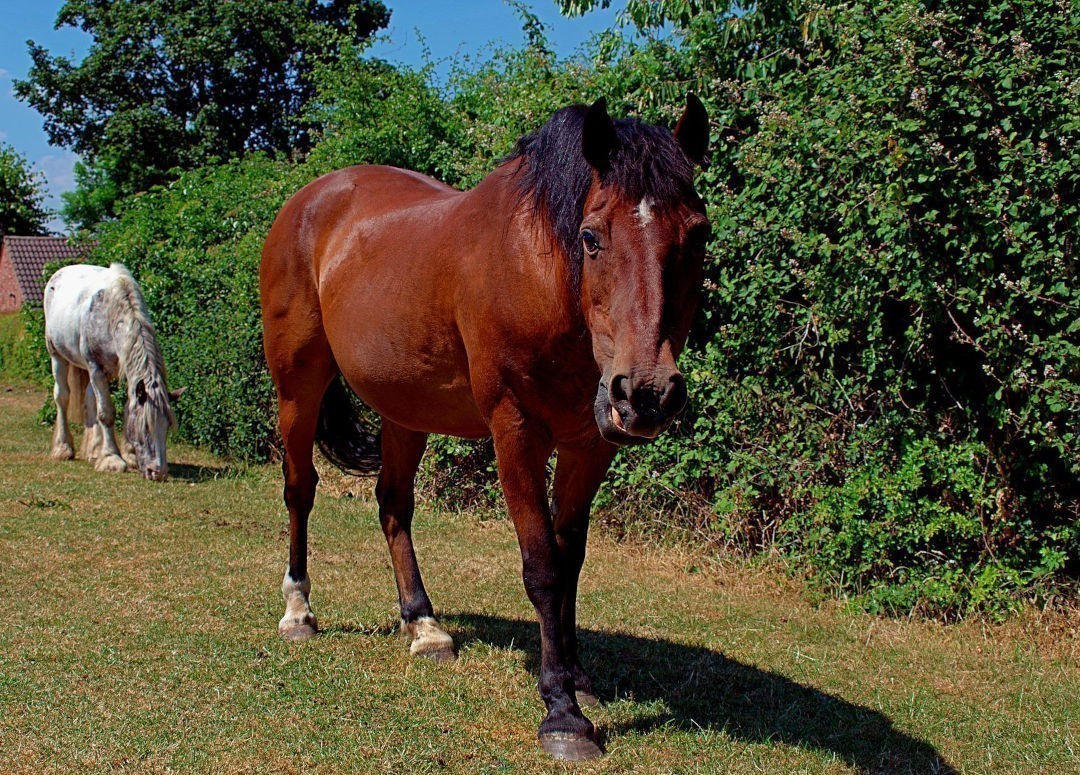Horse Friendly Hedging
| Size / Type | Price per item for | ||||
|---|---|---|---|---|---|
| 10+ | 50+ | 250+ | 1000+ | ||
| Price per item for | 10+ | 50+ | 250+ | 1000+ | |
|
Br
|
£1.22
|
£0.94
|
£0.86
|
£0.78
|
|
|
Tr
|
£1.92
|
£1.60
|
£1.48
|
£1.36
|
|
-
Plant Types & Availability - More information
Br = Bare Root Plant, Tr = Bare Root Transplant
All prices include VAT at 20%.
We are frequently asked for a hedge suitable for equestrian use, so we have put together a collection of mainly native plants which, if grazed by horses, should cause no harm. The plants will need protecting from the horses until they are fully established, as with any hedge. The hedge will give interest all year round and will be beneficial to many species of wildlife. If pruned correctly, fed and kept well watered it will grow quite rapidly so it will soon offer protection from the elements. To give extra shade to the horses we would recommend planting and growing some trees in the hedge as well.
The transplants in the hedge will be 60-90cm (2-3ft), approximately 50% Quickthorn and the balance selected from Dog Rose, Dogwood, Guelder Rose, Hazel, Hornbeam, Myrobalan Plum, Rose Rugosa and Rose Sweet Briar.
The seedlings will be 60-90cm (2-3ft) Quickthorn, Myrobalan Plum, 40-60cm (16-24ins) Dogwood, Guelder Rose, Hazel, Rose Rugosa, Rose Sweet Briar, Field Maple and 30 - 45cm (12 - 18ins) Hornbeam.
There has been some concern that Field Maple seeds may cause Atypical Myopathy in horses, as Field Maple (Acer campestre) is in the same family as Sycamore (Acer pseudoplatanus). Our understanding is that this link has not been proven and the British Horse Society recommend Field Maple as a safe hedging plant for horses. Field Maple is NOT included in the standard transplant mix. We are happy to substitute a different plant for Field Maple if requested.A short hedge will have fewer different species than a long one.
For every 10 metre length of hedge we recommend 27 plants (10 yards = 25 plants), giving an average planting distance of 35cm (14ins) between plants, but be guided by the planting distances listed for individual varieties. For a denser or stock-proof hedge we recommend a double row planted 50cm (20ins) apart, 38cm (15ins) between rows, that is 40 plants for a 10 metre length (36 plants for a 10 yard length)
Save 10% on this plant when collecting from the Garden Centre - discount will be automatically applied when Click and Collect is selected - click here for more details.
Horse Friendly Hedging is available as:
Br = Bare Root Plant
Tr = Bare Root Transplant
Bare-Root Plants (Transplants)
Bare-root plants are sold without a pot/soil around the roots. This is a more cost effective and environmentally friendly way of growing plants. To ensure the best plant health we do not store our plants in cold storage, but they are left in our field or plant beds until they are ready for packing or collection.
Items marked Br are bare rooted plants grown from cuttings and are typically 1-2 years old. Transplanted plants have been lifted from the ground and replanted. This encourages a better fibrous root system and makes the plant stronger and bushier.
Availability
Bare rooted plants are only available when the plants are dormant (typically from late November to March).
If a plant is currently out of stock because it is out of season (for example, bare rooted plants in summer) or we have sold out but we are expecting more to be available you can pre-order the plant. We only charge credit/debit cards when an order is despatched, not when an order is placed.
Planting Distances for planting as a Hedge
Horse Friendly Hedging can can either be planted as a single row, or if a thicker hedge is required (for example to keep animals out) it can be planted as a double row.
SINGLE ROW - Plant 35cm/14ins apart .
.
DOUBLE ROW - Plant in two rows with plants on each row 45cm (18ins) apart and 38cm (15ins) between each row:
To calculate the number of plants needed for a length of hedging, click on Planting Distance Calculator above.
Planting Guide & RootGrow
We recommend planting with RootGrow. The recommended amount for RootGrow for an order will be shown in your shopping basket.
We will send out a planting guide with your order, you also can find a guide to planting here.
Pruning
Hedging - As a general rule, plants grown for hedging need pruning to encourage side branching. Usually the harder a plant is pruned the bushier it will be. If they are not pruned there is a danger that the hedges will be thin and bare at the base and that the tips of the plants will die back. If the plant is naturally bushy, less or sometimes no pruning will be needed to achieve a dense hedge.
Horse Friendly Hedging: Shrubby climbers. Cotoneaster, Jasmines, Pyracanthas, Star Jasmine and some fruit. These should be planted against the wall.




